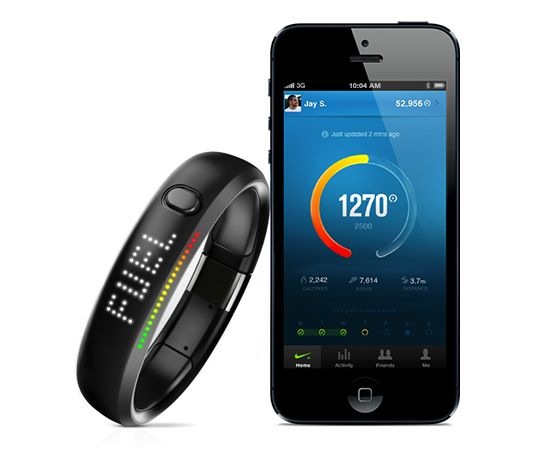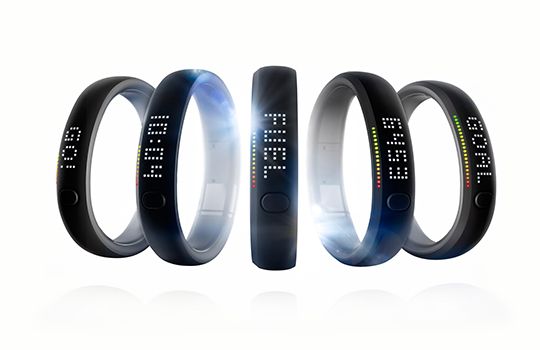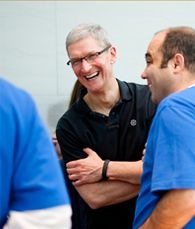Just like accessories maker Jawbone had to release a re-tooled version of its Up fitness band following not-so-flattering reviews, Nike is now reportedly testing a next-generation Nike+ FuelBand in the wild. The device should address some of the annoying shortcomings of the original clip-on product and bring out new features.
For starters, the FuelBand successor will incorporate Bluetooth Smart wireless technology. Also known as Bluetooth 4.0, it allows for a considerably reduced power consumption whilst maintaining a similar communication range compared to Bluetooth 3.0.
As Bluetooth Smart is featured on Apple mobile devices from the iPhone 4S onward, the next Nike+ FuelBand will instantly support these low energy features on newer Apple devices right out of the box.
Nike plans to make it easier for developers to create software that connects to the fitness band. The second-generation FuelBand has additional new features, detailed after the break. The timing of the report is pretty interesting as rival FitBit earlier today started shipping its Bluetooth Smart-enabled $99 activity tracking wristband, the Flex…
Andru Edwards, writing over at GearLive:
First, a heart rate monitor will be built-in to the upcoming FuelBand. You scroll through your options to get to the heart rate monitor, and then pinch the FuelBand on the monitor area, and it will take your pulse.
One of the more interesting features is that the accelerometer data will be part of the API. Basically, developers will have access to the realtime accelerometer data, which can be integrated into apps.
This doesn’t just have to be about fitness, either. Imagine playing a driving game while wearing the FuelBand, and turning an imaginary steering wheel in mid-air while the game captures that data and applies it.
The device should also solve one of the most nagging complaints about the original FuelBand, its sub-par display. The FuelBand successor, the story goes, has an improved display that “responds to button presses much faster” due to the speedier LEDs.
And not only will your iPhone’s battery last longer due to Bluetooth 4.0, but the next FuelBand will also be able to automatically synchronize without you having to manually perform the action because Bluetooth 4.0 can instantly wake up a host device.
http://www.youtube.com/watch?v=LC6wptkt2Wk
Last, but not the least, programmers will be able to access real-time accelerometer data in their apps via a much improved API.
This doesn’t just have to be about fitness, either. Imagine playing a driving game while wearing the FuelBand, and turning an imaginary steering wheel in mid-air while the game captures that data and applies it.
So, who’s excited already about the next FuelBand?
For comparison, here’s FitBit’s new Flex wristband with real-time syncing.
By the way, Apple CEO Tim Cook sits on Nike’s board of directors, so it should be interesting seeing whether the FuelBand’s Apple exclusivity holds up.
I’m also curious about the next FuelBand perhaps taking advantage of the rumored headline features tapped for a next-generation iPhone, such as fingerprint identification technology.
Tim Cook wearing a Nike+ FuelBand.
As a notable slap in the Google chairman Eric Schmidt’s face who said in November 2011 that developers will soon write for Android first, Nike recently announced on Twitter that it’s pulled the plug on an Android companion app for the FuelBand.
Surprisingly enough, Edwards also claims that a FuelBand Android app is, indeed, on the way.
Coincidentally or not, I recently picked up a Nike+ running shoes with a Nike+ sensor. it took some figuring out how to enable Nike+ support in my iPhone’s Settings, but overall I’m very pleased with the experience.
http://www.youtube.com/watch?v=dG0vLFFtZDs
That being said, I was just thinking how a combination of an iOS devices and a wearable Bluetooth accessory makes a hell of a lot of sense.
Imagine what Apple could do by creating something wearable (hint: iWatch) and tying that accessory to its own devices.


